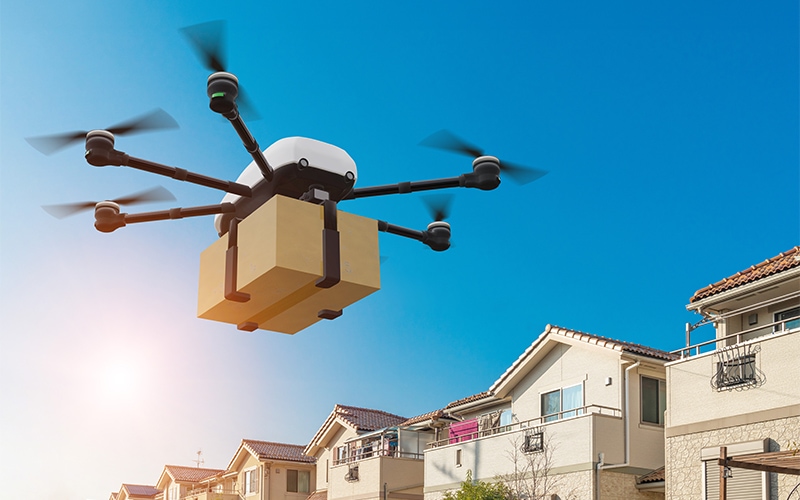Walmart Bets Big on Drones

Walmart is banking on drone deliveries to continue dominating both the last-mile delivery sector and the broader retail industry. This drone strategy is long-term and based on Walmart’s research showing that younger consumers (ages 18-35) are the most likely to use drone delivery services.
Younger consumers, accustomed to organizing their lives around iPhones and apps, will make it happen—as they extend their DoorDash and restaurant delivery habits to retail. Walmart’s planning banks on younger customers, once acculturated, becoming loyal drone/app users well into adulthood—until their hair turns gray.
And speaking of gray hair, research shows other demographic groups will also increasingly use drone delivery. Consumers aged 55 and older are expected to turn to drones for medical and essential deliveries—a growing market sector in more ways than one.
Walmart customers in the 35-54 age range—professionals and busy families—often don’t have time to get to the mall or superstore. Walmart has learned from the 150,000 drone deliveries it has already completed and is now committing to enable drone delivery for 50% of store inventory. Leaning into that long-term strategy, the plan is to increase product availability beyond 50%.
Also increasing? The number of markets where Walmart offers drone last-mile delivery. Recently announced expansions include Tampa, Orlando, Atlanta, Charlotte, and Houston—bringing drone delivery to a total of five states and adding 100 more stores.
The company’s delivery partner, Wing, will assist with the rollout, using a hub-and-spoke model that expands service outward in growing concentric circles and flies up to six miles from each launch store.
As I learned during a visit to Bentonville years ago, none of this would work without Walmart’s early and total buy-in to the demand-driven inbound logistics philosophy. Other tech and logistics investments have played—and continue to play—a crucial role. But without efficiently matching inventory to real-time demand and making it almost instantly available for delivery, those drones would be stuck on the launch pad.
Today it is drones, but it has happened before. Another new delivery method—the advent of modern mail order—was pioneered by Montgomery Ward and Sears Roebuck, who used the new technology of the U.S. Postal Service to dominate retail for decades.
While other retailers are still strategizing how to survive and grow in today’s market, one is making an enterprise-wide commitment to demand-driven logistics and smart investments in drone delivery to grow over the long haul.

